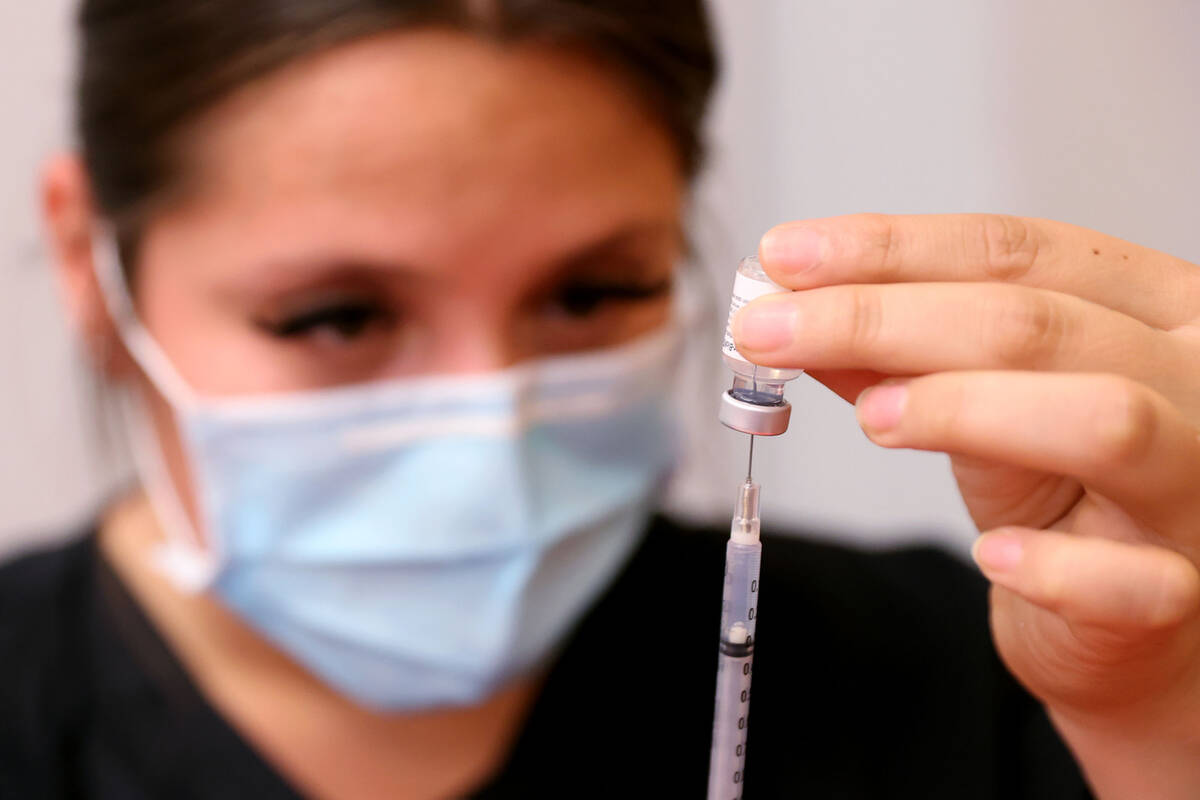Omicron subvariant detected in Southern Nevada, but data shows signs of hope
Wrapping up an encouraging week for Clark County, three key COVID-19 metrics — the average number of daily new cases, the test positivity rate and hospitalizations — fell again Friday.
The Southern Nevada Health District reported 2,566 new COVID-19 cases, bringing the county’s total to 469,239 cases of the disease caused by coronavirus. The number of daily new cases has been falling since the middle of January.
The health district also announced Friday that the first subvariant of omicron was detected in Southern Nevada in a woman in her 40s who recently had traveled out of the country. The woman was fully vaccinated.
“There is no evidence that it causes more severe disease than the original omicron variant,” health district officials wrote in a statement. “It is expected that new variants will occur.”
On Thursday, state biostatistician Kyra Morgan noted the drop in new cases and said it appeared the current omicron-driven surge has peaked in Clark County.
“I’m pretty comfortable saying that specifically in Clark County, I think the worst of the omicron wave is over,” Morgan said.
But experts who have analyzed omicron’s peak in other countries have warned it is still too early to make any sweeping conclusions about the current situation.
Experts have said they expect the current surge to end quickly once it reaches the peak. That follows data from South Africa and Europe, which found that the wave looks more like an icicle once it is complete: a rapid rise in cases, then a swift fall from the peak.
The daily positivity rate, which tracks the number of people tested for COVID-19 who are found to be infected, and average daily new cases both fell for the third Friday in a row, showing hopeful signs.
State data shows the current peak in Clark County came Jan. 15, when the daily new cases average reached 5,763. The numbers have been steadily falling since Jan. 15.
Officials have said that the test positivity rate is often the first indicator that a surge is starting or ending, while other numbers can lag behind.
State and county health agencies often redistribute daily data after it is reported to better reflect the date of death or onset of symptoms, which is why the moving-average trend lines frequently differ from daily reports and are considered better indicators of the direction of the outbreak.
Meanwhile, another 33 deaths were reported Friday, bringing the total in the Clark County to 6,866. The average daily death rate over the past two weeks rose from nine to 10 on Friday.
But hospitalizations in the county fell Friday to 1,524 patients with confirmed or suspected COVID-19, down 68 from the day before.
The health district reported a daily positivity rate Friday of 34.3 percent, down from 35 percent Thursday.
The average daily new cases dropped by 196 to 2,279 Friday.
State data very much mirrored county data, with a drop in hospitalizations, test positivity rate and average daily new cases.
Nevada reported 3,999 new cases and 39 new deaths on Friday for a total of 615,774 cases and 8,914 deaths statewide.
The average daily new cases rate fell by 203, bringing the new average to 3,207.
Average deaths increased from 11 to 12 but 69 fewer people were hospitalized with confirmed or suspected COVID-19. Statewide, 1,797 people were hospitalized Friday.
The daily positivity rate fell just slightly, from 34.2 percent to 34 percent.
State officials said Thursday that the 580,000-plus test kits requested by Gov. Steve Sisolak from the federal government were expected to arrive in Nevada next week. Data from at-home tests will not be included in publicly available data.
As of Friday’s report, 55.7 percent of eligible Nevada residents over five were fully vaccinated.
Contact Sabrina Schnur at sschnur@reviewjournal.com or 702-383-0278. Follow @sabrina_schnur on Twitter.
Clark County's daily numbers
New cases: 2,566
Deaths: 33
Hospitalizations: 1,524
Test positivity rate: 34.3 percent
New cases per day, 2-week average: 2,279
New deaths per day, 2-week average: 10
Source: Southern Nevada Health District; state Department of Health and Human Services











































